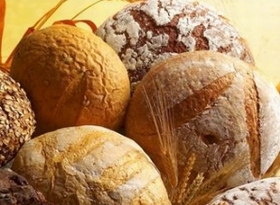 he report "Food Enzymes Market By Types (Carbohydrase, Protease, Lipase), Applications (Beverages, Dairy, Bakery), Sources (Microorganisms, Plants, Animals), and Geography - Global Trends and Forecasts To 2018" defines and segments the Food Enzymes Market with analysis and forecasting of the global market size in terms of revenue. It also identifies driving and restraining factors for the market with analysis of trends, opportunities, burning issues, winning imperatives, and challenges.
he report "Food Enzymes Market By Types (Carbohydrase, Protease, Lipase), Applications (Beverages, Dairy, Bakery), Sources (Microorganisms, Plants, Animals), and Geography - Global Trends and Forecasts To 2018" defines and segments the Food Enzymes Market with analysis and forecasting of the global market size in terms of revenue. It also identifies driving and restraining factors for the market with analysis of trends, opportunities, burning issues, winning imperatives, and challenges.The market is segmented and revenue is forecasted based on major regions such as North America, Europe, Asia-Pacific (APAC), and Rest of the World (ROW).
The food enzymes market was valued at $1355.8 million in 2012 and expected to increase to $2306.4 million by 2018, with a CAGR of 8.0% for the forecast period. In 2012, North America led the Global Food Enzymes Market with a share of 35.0% in value-terms, followed by Europe (29.0%), and Asia-Pacific (24.0%).
Food enzymes are biocatalysts which carry out specific functions in various application industries. They can be produced from plants, animals or micro-organisms. Enzyme use in the food processing industry results in reduced carbon footprint and improved yields, while reducing raw material wastage. The high reaction specificity of enzymes ensures that only the desired reaction takes place out of the many thermodynamically possible ones. Many new applications for food enzymes are being developed in the market such as egg processing and protein fortification. These are expected to drive the market forward in the coming years.
In this report, the food enzymes market is divided into four regions -- North America, Europe, APAC, and ROW. The North American region constitutes the largest market, with the U.S. commanding the leading share in this industry. Europe is at the second position and is expected to witness a below-average growth in the market. Asia-Pacific has the third largest share and is expected to be the fastest growing market, followed by Rest of the World. Brazil, South Africa and India are some of the emerging markets for food enzymes.
Growing demand for processed foods coupled with increasing awareness about health conscious products is significantly propelling growth in food industry, which in-turn is driving growth of the enzymes market. In terms of the type segmentation, carbohydrases dominate the market followed by proteases and lipases. Carbohydrases are further categorized into amylase, cellulase, xylanase, and pectinase.
Globally Bakery is the largest application market, as enzyme use improves dough stability, crumb structure and shelf life of end products. Wide use of enzymes in cheese processing drives the use of enzymes in dairy industry, which is the second largest application market followed by the beverages industry. Food enzymes are largely sourced from micro-organisms with new technologies emerging to produce genetically modified organisms strains. The enzymes thus produced can function in adverse operational conditions and improve process efficiency.
The European Union recently imposed a legislation to the assess risks associated with the use of enzymes in food industry and further amendments are required to develop an unambiguous set of guidelines to regulate the market.





